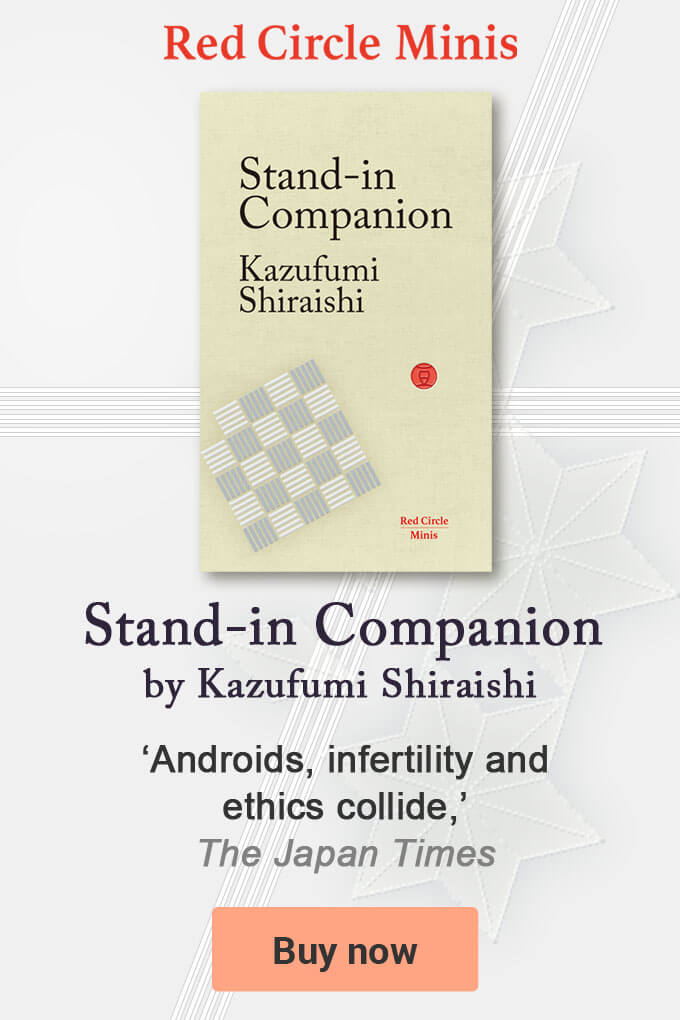Newspaper novels, Shimbun Shosetsu, still popular today, were launched in Japan in 1886 by the Yomiuri newspaper[UPDATED: 7-20-2020]
There is some debate amongst academics about which work was the very first published newspaper novel, Shimbun Shosetsu, in Japan.
Several are often mentioned, but some consider Torioi Omatsu Kaijo Shinwa, The New Martine Tales of Bird-Chasing Omatsu, by Hikosaku Kubota (1846-1898), published between 1877, and 1878, as one of the first, if not the very first, serialised newspaper novel.
It is a tale, allegedly based on a true story, of an attractive young woman who swindles her admirers, but in a twist of fate ends up being swindled herself in an early-age femme fatale type narrative.
Omatsu, its protagonist, is an untouchable door-stopping beggar. At that time, such individuals were often given the moniker ‘bird-chaser’.
The tale was published in 14 newspaper installments before being released as a woodblock-printed book, in 1878, based on the newspaper articles. A copy of which can be viewed online at Japan’s National Diet Library (NDL).
It was, in a sense, a very early form of what is known today as fake news a type of reportage referred to in the 1880s in Japan as tsukuribanashi, manufactured stories.
Omatsu’s exploits were initially reported as news and not as fiction in the newspaper and used to promote newspaper sales and expand readership.
Omatsu’s tale was published before what is generally considered Japan’s first modern novel in 1887, Ukigumo, The Drifting Cloud, by Futabatei Shimei (1864-1909).
This was also before the Yomiuri newspaper, its publisher, which now claims to have the largest circulation of any newspaper in the world, had created a dedicated section headed Shimbun Shosetsu, Newspaper Novel, clearly distinguishing fictional information from facts reported in its pages.
It took almost a decade from the publication of The New Martine Tales of Bird-Chasing Omatsu for the newspaper’s Shimbun Shosetsu section to be launched in 1886, formally differentiating these two types of distinct content types, and spawning the genre of the Newspaper Novel.
Kubota’s tale may not fall neatly into the definition of a modern novel in terms of its style, narrative and structure, despite using the often-exploited and occasionally iconic stock character of a protagonist who is a dangerous seductress, sometimes referred to in Japan as dokufu, poisonous women.
Nonetheless, according to John Whitter Treat in The Rise and Fall of Modern Japanese Literature it ‘constituted the first modern readership in Japan by virtue of its scale.’ He considers it to be Japan’s first bestseller newspaper generated novel.
The Konjiki Yasha, The Gold Demon, by Koyo Ozaki (1968-1903) published between 1897-1903 is also cited as one of Japan’s first important serialised novels.
Also know as The Usurer in English. It was alongside Hototogisu, The Cuckoo, by Kenjiro Tokutomi (1868-1927) one of the two bestselling works of literature in Japan’s Meiji period (1868-1912).
Serialised fiction published in newspapers is still popular today in Japan. High profile authors such as Mitsuyo Kakuta, Fuminori Nakamura and Kazufumi Shiraishi continue to write Shimbun Shosetsu with great success.
The Yomiuri newspaper, the largest of Japan’s so-called big five national newspapers, is also still heavily involved in the publishing and promotion of literary fiction, now clearly marked as fiction, through its newspapers, and magazines such as Chuo-Koron one of Japan’s oldest continuously published magazines,
The newspaper also organises literary prizes, owns a book publishing company, and the serialised fiction the Yomiuri continues to publish in its morning and evening editions is still enjoyed by millions throughout Japan.

